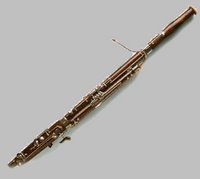 Women's History Month at HurdAudio takes a close listen to wind trio and a solo violin work.
Women's History Month at HurdAudio takes a close listen to wind trio and a solo violin work."Trilling" (1989?) by Wendy Prezament. Scored for flute, clarinet and bassoon. Found on Masterpieces from the Music Gallery released in 1992. This particular performance was performed on April 22, 1989 (I was in the audience). This piece has stuck with me ever since and there is a frustrating lack of information about this composition and Wendy Prezament (no photos) online.
 This 9-minute work opens with a lone bassoon note in a moderately high register pulsating irregularly at a moderate tempo. The flute then trills briefly in a low register and the clarinet comes in shortly with a sustained tone, then a trill from that same note before moving back toward a drone. What follows is an interplay between these three instruments as they weave inventive melodic lines.
This 9-minute work opens with a lone bassoon note in a moderately high register pulsating irregularly at a moderate tempo. The flute then trills briefly in a low register and the clarinet comes in shortly with a sustained tone, then a trill from that same note before moving back toward a drone. What follows is an interplay between these three instruments as they weave inventive melodic lines. The fluidity of this composition is striking. The musical ideas in this work seem to drift effortlessly between highly independent parts and rhythmic unisons that coalesce at various points along the way. The linear, melodic lines take on an organic quality - often hocketing freely between parts - as they unfold with enormous variation even as the work as a whole sustains a healthy degree of harmonic dissonance throughout. The overall balance is impressive as these three instruments contribute equally to the sonic image.
The fluidity of this composition is striking. The musical ideas in this work seem to drift effortlessly between highly independent parts and rhythmic unisons that coalesce at various points along the way. The linear, melodic lines take on an organic quality - often hocketing freely between parts - as they unfold with enormous variation even as the work as a whole sustains a healthy degree of harmonic dissonance throughout. The overall balance is impressive as these three instruments contribute equally to the sonic image. "Portrait of Malcolm" (1987) by Pauline Oliveros. Performed by Malcolm Goldstein on Sounding the New Violin from 1991 on the What Next? label. This is a solo violin realization of "Portrait of _______" - a graphic score for solo or ensemble.
"Portrait of Malcolm" (1987) by Pauline Oliveros. Performed by Malcolm Goldstein on Sounding the New Violin from 1991 on the What Next? label. This is a solo violin realization of "Portrait of _______" - a graphic score for solo or ensemble."Portrait of _______" challenges the performer to look within to realize this improvisation based composition. The score poses questions like: "VII. Who am I? Express this question." or "III. Signature. Create your signature." This is an approach to composition that raises any number of potentially uncomfortable questions about how much of the sounding composition becomes the creation of the end performer (as opposed to an interpretation of the specific materials assembled by the composer) and runs the risk of crumbling at the hands of a performer who abuses such generosity or even attempts this idea either half-heartedly or cynically.
In the hands of Malcolm Goldstein this "self portrait" remains faithful to the instruction set of Pauline Oliveros. And the resulting sound is all Goldstein even as the audible intent and soul of this composition is clearly Oliveros. Malcolm Goldstein's approach to the violin is unique, and sadly not more widely documented on recordings such as this one. The range of tone, technique, extended technique and attitude is so broad the instrument is practically reborn as a larger-than-life version of the full gamut of sound emanating from the violin. The scrapes and scrabblings of a bow pressed "too hard" or "too soft" or bowed on either side of the bridge are treated as an element equal to any other means of producing sound and Goldstein has formed a wide vocabulary that defies any traditional approach toward notation. Given the kind of sound and soul that animates this "new violin" this "Portrait of ______" score makes perfect sense and finds an exquisite match with this performer.


No comments:
Post a Comment